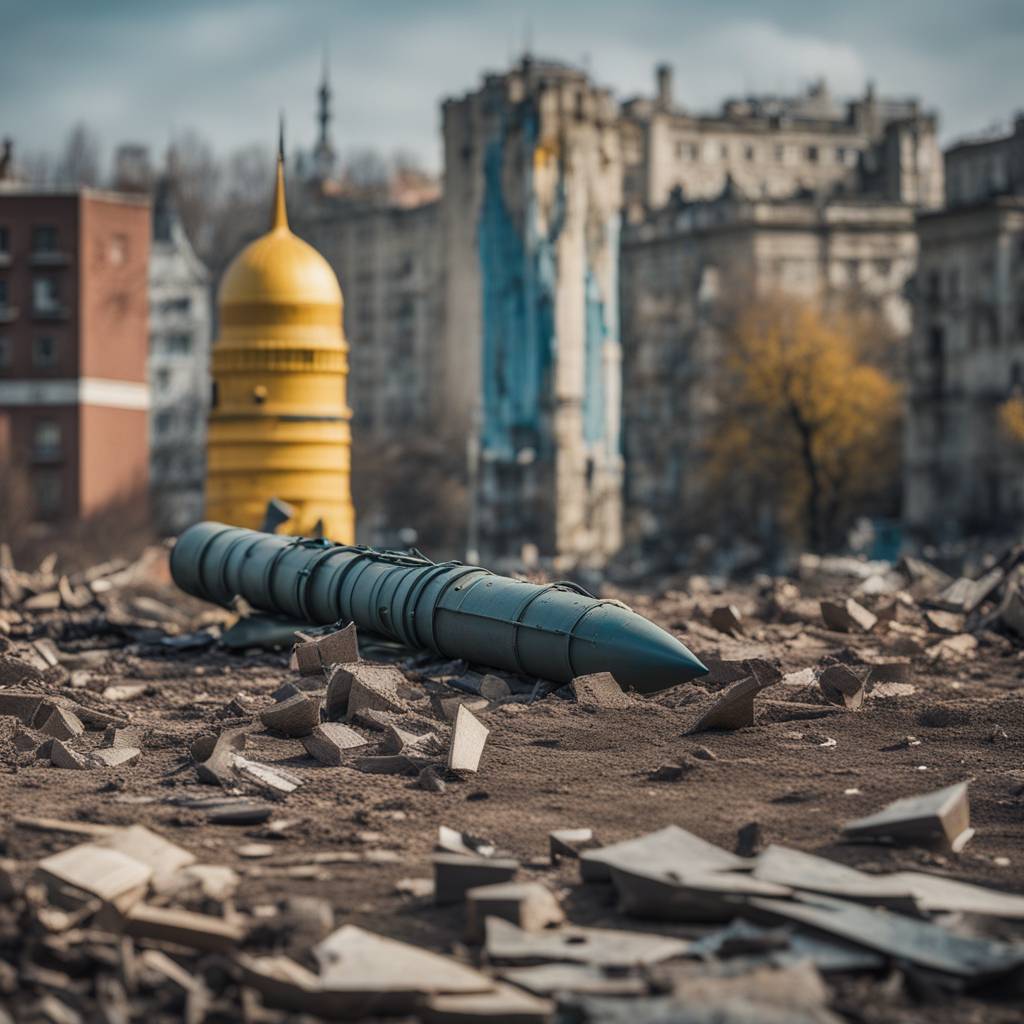In the early hours of a recent Saturday, Russian rockets struck residential buildings in Kharkiv, resulting in the deaths of at least seven people and injuries to 11 others. Ukrainian President Volodymyr Zelensky condemned the attack as part of ongoing Russian terror in the city and called for increased air defense support to protect the Kharkiv region. The assault comes at a time when Ukraine’s air defenses are strained due to a lack of American military support for over six months, and uncertainty looms over future assistance amid Republican resistance in Congress to a proposed $60 billion aid package.
With Russia stockpiling and expanding its weapons arsenal, including missiles, guided bombs, and attack drones, the country has escalated its bombardments across Ukraine. President Zelensky reported that in March alone, Russian forces used over 400 missiles, 600 drones, and 3,000 guided aerial bombs against Ukraine. Kharkiv, as the second-largest city in Ukraine, has been a key target for Russian attacks, where attempts to capture it earlier in the war were unsuccessful. Recently, Russia employed powerful guided bombs in the city, representing a new threat that Ukraine is ill-equipped to defend against.
The devastating impact of the Russian bombardments on Kharkiv is evident with over 20,000 buildings destroyed, estimated to cost more than $10 billion to rebuild. Critical energy infrastructure and private establishments have been severely damaged, leaving over 150,000 residents homeless. The most recent attack on residential neighborhoods involved S-300 missiles fired from Russia, causing damage to a number of buildings and claiming several lives. The assault followed a propaganda campaign by the Kremlin aimed at spreading fake messages in Kharkiv to stoke fear and panic among its citizens.
Despite the daily attacks and blackouts in Kharkiv, there has not been a mass exodus from the city, which has a population of 1.3 million. Russia’s air superiority has allowed it to make strategic gains on the battlefield, using guided bombs to weaken Ukrainian fortifications before seizing territories. Ukrainian officials have identified air-to-surface missiles with a range of over 55 miles being used to target Kharkiv, giving Russian warplanes a significant advantage in launching them from inside Russia. As Ukraine struggles to counter this threat, it has initiated drone assaults targeting Russian warplanes at multiple airfields, leading to the destruction of military aircraft and damage to others.
The complex drone attack launched by Ukraine signifies a new phase in its military operations against Russia, with four separate airstrikes targeting key air bases. The success of these strikes, destroying military assets and impacting strategic industries in Russia, represents a notable advancement in Ukrainian capabilities. However, claims and counterclaims by both sides make it challenging to verify the full extent of the damage inflicted. The ongoing conflict between Russia and Ukraine continues to escalate, with civilian casualties, infrastructure destruction, and humanitarian crises worsening in the region. International support and aid are crucial to aid Ukraine in defending against Russian aggression and rebuilding its shattered cities like Kharkiv.








